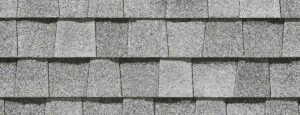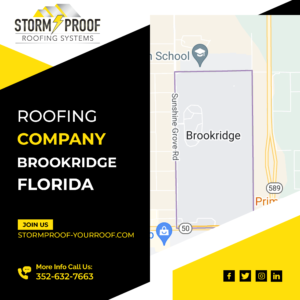Ultimate Roof Replacement Guide For Homeowners: Empower Your Home
Embarking on a roofing project in Florida, whether it’s for minor repairs or a comprehensive replacement, requires finding a roofing company that not only meets but exceeds your expectations. This decision goes beyond a superficial internet search, demanding a methodical approach that evaluates the company’s expertise, reputation, client feedback, and the breadth of services offered. Choosing the right roofing company is paramount for ensuring the delivery of high-quality service and the installation of a durable, long-lasting roof compliant with Florida’s stringent roofing standards. In this Ultimate Roof Replacement Guide For Homeowners: Empower Your Home, we delve into the intricate details and essential considerations to guide you through this crucial decision-making process.
Conducting Thorough Research
The initial phase in identifying the ideal Florida roofing company involves extensive research. This process should encompass:
- Online Searches: Start with a broad internet search to identify potential companies.
- Referrals: Ask for recommendations from friends, neighbors, or family members who have recently undergone roofing projects.
- Local Real Estate Agencies: Sometimes, real estate professionals can provide insights into reputable roofing companies they’ve worked with in the past.
Evaluating Client Feedback and Reviews
Roof Replacement Guide To New Roof Installation in Florida
An essential aspect of your research includes reviewing client feedback:
- Company Website: While company-provided testimonials can offer some insights, they may present a biased view.
- Third-Party Review Platforms: Websites like Google Reviews, Yelp, or Angie’s List provide more objective perspectives on a company’s reliability and customer satisfaction levels. Pay particular attention to how a company responds to criticisms or complaints, as this can be indicative of their customer service ethos.
Verifying a Roofing Company's Licensing
Ensuring compliance with Florida’s roofing regulations is a critical step in safeguarding your home, especially given the state’s susceptibility to hurricanes and severe weather. Selecting a roofing company that adheres strictly to the Florida Building Code is not only about securing a durable and safe roofing system but also about protecting your investment and peace of mind. The process of finding a reputable and qualified roofing contractor involves diligent research, careful evaluation of their services, client feedback, and a thorough verification of their licensing and insurance credentials.
- Visit the DBPR online licensing search portal at www.myfloridalicense.com.
- Conduct a search using the contractor’s name, license number, or geographical information.
- Review the provided details regarding the contractor’s license status, including any disciplinary actions or complaints.
Ensuring Adequate Roofing Insurance Coverage
Equally important is confirming that the roofing contractor has essential insurance coverage, including workers’ compensation and liability insurance. These policies protect both the employees and the homeowner from potential liabilities arising during the roofing project. To check for insurance coverage:
- Request proof of both workers’ compensation and liability insurance directly from the contractor.
- Use the Florida Division of Workers’ Compensation Proof of Coverage Search Page at dwcdataportal.fldfs.com/ProofOfCoverage.aspx for further verification of workers’ compensation insurance, searchable by the employer’s name or Federal Employer Identification Number (FEIN).
The Importance of Compliance
Roof Replacement Guide Everything You Need To Know
Choosing a Roofing Contractor without verifying their license and insurance exposes homeowners to considerable risks, including substandard workmanship and potential financial liabilities. By ensuring your roofing contractor is fully licensed and insured according to Florida regulations, you’re not only protecting your property but also ensuring the quality of the work and your financial interests. This comprehensive approach to selecting a roofing contractor guarantees a robust, long-lasting roof that complies with Florida‘s stringent standards, providing you with security and peace of mind in your roofing investment.
Comprehensive Scope of a Roof Evaluation
A thorough roof evaluation stands as the foundational step in any roofing project, crucial for establishing a clear understanding of your roof’s condition and determining the necessary actions for its maintenance or renewal. This comprehensive process, undertaken by seasoned roofing specialists, leverages advanced diagnostic tools and deep industry expertise to create an accurate health profile of your roof.
A detailed examination encompasses various critical components of your roofing system:
Roofing Materials: The condition of shingles or other materials is assessed for wear and tear, including signs such as curling, cracking, or the presence of moss and algae, which could indicate moisture issues.
Flashing Inspection: Essential for preventing leaks, the flashing around roof features like chimneys and vents is closely examined for damage or improper installation.
Gutter Evaluation: The functionality of gutters in directing rainwater away from the structure is verified, checking for blockages or structural damage that could impair their performance.
Structural Integrity: Beyond the visible elements, the evaluation probes the roof’s underlying structure, including an attic inspection for water damage, mold, or insulation deficiencies, and an assessment of the decking and trusses for any signs of compromise.
Following the inspection, a detailed report is provided, documenting any identified issues or damage, complete with photographic evidence. This report forms the basis for recommendations on the most appropriate interventions, ranging from targeted repairs to comprehensive replacements.
The Diagnostic Power of a Roof Evaluation
This evaluative process serves not merely as a check-up but as a proactive measure to identify and address potential issues before they evolve into significant concerns. By highlighting minor problems early, it offers homeowners the opportunity to undertake preventative repairs, potentially averting substantial future roof repair costs.
Incorporating a detailed roof evaluation as an integral part of your roofing project ensures a well-informed approach to maintaining or upgrading your roofing system. Such diligence in the initial stages of a roofing project underscores the commitment to quality and longevity, hallmarks of a professional roofing company’s service ethos. By prioritizing this evaluation, homeowners gain invaluable insights into their roof’s condition, enabling informed decision-making that safeguards their property and ensures the enduring performance of their roofing system.
Understanding Roofing Estimates
Navigating through a detailed roofing estimate is an essential step in your roofing project, offering a clear view of the anticipated expenses and laying the groundwork for financial planning. This guide aims to help you understand the complexities of a roofing estimate, ensuring you’re well-prepared to manage your project effectively.
A roofing estimate is a comprehensive document that itemizes the various costs associated with your roofing project. It’s important to recognize that roofing involves multiple tasks, each contributing to the final cost. Here’s what to expect in your estimate:
Shingle Replacement Costs
- Material Costs: The type of shingles you choose (asphalt, tile, metal, etc.) will directly impact the cost. Each material comes with its own price point and benefits.
- Labor Costs: This covers the installation of shingles. The complexity of your roof and the chosen material can affect these costs.
Underlayment Installation
Material and Labor: The roofing estimate should specify the cost of the underlayment material and the installation labor. The underlayment type and roof size play significant roles in determining these costs.
Flashing Repair or Installation
- Cost Variability: Costs can vary based on whether you need new flashing installed or existing flashing repaired. The material (galvanized steel, aluminum, copper) also factors into the cost.
Additional Features
- Skylights and Chimney Flashing: Specialized installations like skylights or chimney flashing require attention to detail and carry their own set of costs due to the complexity and potential for leaks.
Contingency Budget
- Unforeseen Costs: A contingency budget is crucial for covering unexpected expenses, such as additional repairs uncovered during the project. This helps in managing your budget effectively without surprises.
Project Timeline
- Scheduling and Planning: While not a direct cost, the timeline estimation is vital for planning purposes, helping you prepare for the project duration and any associated disruptions.
Making the Most of Your Roofing Estimate
- Review Each Item: Take the time to go through each line item in the estimate to fully understand where your investment is going.
- Ask Questions: If any part of the estimate is unclear, don’t hesitate to ask your roofing contractor for clarification. A reputable contractor will be willing to explain the details and ensure you’re comfortable with the proposed work.
- Compare Wisely: If you’re considering multiple estimates, compare them based on the scope of work and the quality of materials, not just the bottom line.
A detailed roofing estimate is more than just a list of costs; it’s a blueprint for your project. Understanding the specifics of the estimate not only aids in budgeting effectively but also ensures you are fully informed about the scope of work. By engaging in open communication with your roofing contractor, you can navigate your roofing project with confidence, ensuring a smooth and successful outcome. Remember, the goal is to secure a durable, well-constructed roof that protects your home and enhances its value.
Roofing Permits
Securing the necessary permits for a roofing project in Florida is a crucial step that underscores the commitment to safety, compliance, and quality in construction. Florida’s stringent building codes mandate permits for significant roofing work, emphasizing the importance of adhering to established safety standards and regulations. This process is not just a bureaucratic hurdle but a vital measure to ensure the integrity and safety of your home, especially in a state often hit by hurricanes.
Navigating the Permit Process
Professional roofing companies in Florida, understanding the intricacies of local and state regulations, typically manage the permit acquisition process on behalf of homeowners. This involves:
Submitting an Application: Roofing contractors submit a detailed application to the local building department, outlining the scope of work, materials to be used, installation methods, and the project’s estimated cost.
Providing Project Plans: Alongside the application, contractors must also submit comprehensive project plans. These plans detail how the new roof will be installed, methods for diverting water from the property, and adherence to local codes concerning wind resistance and other relevant standards.
Review and Approval: The local building department reviews the submitted documents to ensure the proposed work meets all local and state building codes. Upon approval, a permit is issued, which must be displayed at the job site throughout the project duration.
The Role of Final Inspections
The permit process culminates with a final inspection conducted by a local building department inspector. This crucial step verifies that the completed work aligns with the approved plans and complies with all applicable codes and standards. Passing this inspection signifies the official completion of the permit process, affirming the project’s adherence to the highest safety and quality standards.
The Importance of Compliance and Professional Guidance
Adhering to Florida’s roofing regulations through the proper permitting process offers homeowners peace of mind, knowing their roofing project is executed in compliance with rigorous safety and quality standards. The complexities of obtaining permits and ensuring code compliance underscore the value of partnering with an experienced roofing company. Such a company not only facilitates the permitting process but also ensures that every aspect of the roofing project, from planning to completion, meets the strictest standards of safety and integrity.
Choosing a professional roofing company adept at navigating these regulatory waters is essential for a successful and compliant roofing project. This partnership ensures that your roofing work is not only of the highest quality but also contributes to the safety, durability, and value of your home, safeguarding against the challenges posed by Florida’s unique climate and weather conditions.
Selecting The Right Roofing Materials
Selecting the ideal roofing material is a pivotal decision in any roof replacement or installation project, significantly impacting the roof’s longevity, cost, energy efficiency, aesthetic appeal, and environmental footprint. With an array of options available—from traditional asphalt shingles and metal roofing to tile, wood, slate, and innovative green solutions—making an informed choice requires a comprehensive understanding of each material’s unique benefits and potential drawbacks. Here’s a closer look at some popular roofing materials to help guide your decision-making process:
Asphalt Shingles
Pros:
- Affordability: Asphalt shingles are known for their cost-effectiveness, offering a budget-friendly roofing solution.
- Versatility: Available in a myriad of colors and styles, they can easily complement various architectural designs.
- Ease of Installation: Their straightforward installation process can reduce labor costs.
- Durability: With proper maintenance, they can last between 15 to 20 years.
Cons:
- Weather Susceptibility: Their lifespan can be affected by extreme weather conditions.
- Environmental Impact: Asphalt shingles are petroleum-based and not the most eco-friendly option.
Metal Roofing
Pros:
- Longevity: Metal roofs boast a lifespan of 40 to 70 years, making them a long-term investment.
- Weather Resistance: They excel in extreme weather conditions, including high winds and hail.
- Energy Efficiency: Reflecting solar heat reduces cooling costs during warmer months.
- Aesthetic Variety: Available in numerous styles and finishes to suit different tastes.
Cons:
- Higher Initial Cost: The upfront cost is higher than asphalt shingles, though cost-effective over time.
- Noise: Without proper insulation, metal roofs can be noisier during rainstorms.
Tile Roofing
Pros:
- Durability: Both clay and concrete tiles offer exceptional longevity, often exceeding 50 years.
- Aesthetic Appeal: Tile roofs provide a distinctive, elegant look that enhances curb appeal.
- Weather Resistance: Tiles can withstand severe weather, including hurricanes and heavy rains.
Cons:
- Weight: Their heavy weight may require additional structural support.
- Cost: Tile roofs are among the more expensive options due to their material and installation requirements.
Green Roofing Solutions
Pros:
- Environmental Benefits: Living roofs promote biodiversity, improve insulation, and manage stormwater runoff.
- Energy Efficiency: Green roofs and solar roofing options can significantly reduce energy costs.
- Aesthetic and Functional Appeal: They offer unique aesthetic appeal and functional benefits, such as increased roof lifespan.
Cons:
- Structural Requirements: Green roofs need a robust structure for support.
- Maintenance: They may require more maintenance than traditional roofing materials.
Making the Right Choice
When selecting roofing materials, it’s crucial to balance considerations such as durability, cost, aesthetic preferences, and environmental impact. Consulting with experienced roofing professionals can provide valuable insights into the advantages and limitations of each option, helping you choose a material that aligns with your home’s needs, budget, and lifestyle. Ultimately, the right roofing material not only protects your home but also enhances its overall value and appeal.
The Roof Tear-Off Process
The commencement of a roof replacement project is a meticulous process that begins with the critical stage known as the roof tear-off. This initial phase is instrumental in preparing your home for a new roofing system, ensuring that all underlying issues are addressed before the installation of new materials. Here’s a deeper dive into the essential steps of roof tear-off and underlayment installation, highlighting their significance in the overall roofing process.
Stripping Away Old Materials: The tear-off involves removing all existing roofing components down to the bare decking. This step is crucial for uncovering any hidden damage or issues beneath the old materials that could affect the new roof’s performance.
Expertise and Care: Professional handling is essential to prevent damage to the roof’s structural foundation during debris removal. Proper disposal or recycling of old materials is also a key part of this process, adhering to environmental regulations and best practices.
Decking Inspection and Repair: Following the removal of old materials, the decking is thoroughly inspected for any signs of wear, damage, or structural issues. It’s vital that the decking is in optimal condition to support the new roofing materials, with any damaged sections replaced or repaired to maintain the roof’s integrity.
Roofing Underlayment Installation
Adding a Protective Layer: The installation of the underlayment is a pivotal next step, acting as a secondary defense layer between the roof deck and the outer roofing materials. This barrier is essential for water infiltration prevention and protection against the elements.
Material Selection and Application: Underlayment materials, typically made of felt or advanced synthetic products, are carefully selected based on the roof’s specific needs. The application process involves precise fastening and overlapping of seams to ensure complete coverage and water resistance.
Foundation for Shingles: Beyond its protective qualities, the underlayment provides a smooth, uniform surface for the shingle application. This ensures not only the aesthetic appeal of the roof but also the effective adherence of shingles to the roof deck, crucial for the roof’s longevity.
Weather Protection: Serving as a temporary safeguard, the underlayment offers immediate protection against water damage, securing the home against potential weather impacts during the installation process.
The stages of roof tear-off and underlayment installation are foundational to the success of a roof replacement project. They require the expertise of skilled roofing professionals who can meticulously execute these tasks, setting the stage for a durable, efficient, and aesthetically pleasing roofing system. By ensuring these initial steps are performed with precision and care, homeowners can rest assured that their investment is well-protected and their homes are ready to withstand the elements.
Integrating Shingle Replacement and Enhancing Roofing Features
The installation of new shingles represents a pivotal moment in the roofing process, marking the transition towards finalizing the protective and aesthetic components of your roof. This stage is critical for defending your home against various weather conditions while also enhancing its overall curb appeal. Understanding the variety of shingle materials available and their respective benefits will guide you in making an informed decision tailored to your home’s specific needs.
Selection of Shingle Material
The choice of shingle material is instrumental in determining the roof’s durability, cost, and aesthetic impact:
Asphalt Shingles: Renowned for their cost-effectiveness and versatility, asphalt shingles are a preferred choice for many homeowners. They offer a wide range of colors and styles, making them suitable for various architectural designs.
Metal Shingles: Known for their exceptional durability and longevity, metal shingles represent a long-term investment. They excel in extreme weather resistance and can significantly enhance a home’s energy efficiency by reflecting heat.
Slate Shingles: Slate offers unmatched natural beauty and can significantly increase a property’s value. Its resilience and longevity make it an excellent choice for homeowners looking for a permanent roofing solution.
Solar Shingles: Emerging as a sustainable roofing option, solar shingles provide the dual benefits of energy generation and protection, appealing to environmentally conscious homeowners.
The Installation Process
Proper installation is key to maximizing the effectiveness and lifespan of your shingles:
Precision Placement: Each shingle must be accurately placed and securely fastened to ensure comprehensive coverage and protection. The installation pattern is crucial for facilitating proper water runoff and preventing leaks.
Attention to Detail: The process involves meticulous attention to detail, especially around areas prone to water infiltration, such as vents, chimneys, and the roof’s edges. Ensuring these areas are properly sealed and flashed can significantly reduce the risk of leaks.
Enhancing with Additional Features
Beyond shingle replacement, incorporating additional roofing features can further protect and enhance your home:
Skylight Installation: Skylights can transform indoor spaces with natural light, but they must be installed with precision to maintain the roof’s integrity.
Ventilation Systems: Proper attic ventilation is crucial for regulating temperature and moisture levels, extending the life of your roof and improving indoor comfort.
Gutter Systems: A well-designed gutter system is essential for directing water away from the foundation, preventing potential water damage.
Shingle replacement, coupled with the strategic addition of roofing features, plays a vital role in safeguarding and beautifying your home. Selecting the right material and ensuring expert installation are key factors in achieving a durable and aesthetically pleasing roof. Engaging with experienced roofing professionals who can navigate the complexities of shingle replacement and additional installations will ensure that your roofing project meets the highest standards of quality and performance, providing lasting protection and value to your home.
Gutter Systems
Finalizing your roofing project with the installation of an efficient gutter system is a critical step that should not be overlooked. Gutters play an essential role in the overall functionality of your roofing system, ensuring that water is effectively diverted away from your home. This helps to maintain the structural integrity of your property and prevents a range of potential issues.
Importance of a Proper Gutter System
- Prevention of Water Damage: By channeling water away from your home, gutters protect against basement flooding, soil erosion, and damage to your home’s foundation and landscaping.
- Protection for Siding: Gutters prevent rainwater from running down the sides of your house, which can lead to siding wear and potential water intrusion.
Considerations for Gutter Installation
When selecting and installing gutters, consider the following factors to ensure their effectiveness and durability:
- Material: Choices include vinyl, steel, aluminum, and copper, each with its benefits regarding durability, cost, and visual appeal.
- Size and Shape: The gutter’s size and profile should be compatible with your home’s roofing system and the expected volume of rainwater.
- Seamed vs. Seamless: Seamless gutters offer fewer opportunities for leaks but require professional installation. Seamed gutters can be more economical and easier to install for DIY projects.
- Installation Angle: Gutters must be installed with a slight angle towards downspouts to facilitate water flow and prevent standing water, which can lead to gutter damage over time.
Maintenance and Upgrades
- Repairs and Cleaning: Regular maintenance, including cleaning debris and fixing leaks or loose sections, is vital for gutter functionality.
- Gutter Guards: Installing gutter guards can significantly reduce the amount of debris that enters the gutters, decreasing maintenance needs and protecting against clogs.
When to Consider Replacement
Replacing your gutters may be more cost-effective and beneficial in the long run if they are significantly damaged, aged, or improperly installed. New gutters can provide improved performance, better aesthetics, and increased home value.
The installation of gutters and proper sealing are the final touches that complete your roofing project, ensuring that your home is well-protected against water damage. By carefully selecting the right gutter system and ensuring regular maintenance, you can enhance the longevity and functionality of both your roof and gutters. Engaging with experienced professionals for installation and advice can further ensure that your roofing system is optimally designed to protect your home for years to come.
Roof Warranties
A comprehensive understanding of your roof warranty is a critical aspect of securing your roofing investment post-installation. This warranty acts as a formal agreement between you and the roofing company, ensuring that any issues encountered after the installation will be addressed, offering you peace of mind and financial protection.
Key Types of Roof Warranties
Manufacturer’s Warranty: This type of warranty is issued by the manufacturer of the roofing materials and typically covers defects in the materials themselves. Should the materials fail prematurely under standard conditions, this warranty would cover the replacement costs. It’s important to note that some warranties might also cover labor costs for material replacement.
Workmanship Warranty: Provided by the roofing company that performed the installation, this warranty covers issues resulting from the installation process. If problems arise due to incorrect installation methods, the roofing company is responsible for making the necessary repairs at no additional charge.
Essential Considerations
Warranty Duration and Coverage: The length of the warranty and the specific issues it covers are crucial details. A longer warranty period can be indicative of the roofing contractor’s confidence in their work’s quality.
Conditions and Maintenance: Manufacturer warranties may have conditions such as regular maintenance or inspections by certified professionals to remain valid. Ensure you understand these requirements to keep your warranty intact.
Prorated vs. Non-Prorated: Some warranties may be prorated, meaning the coverage decreases over time. Understanding the nature of your warranty’s coverage over its lifespan is essential.
Comprehensive Packages: Some warranties combine both manufacturer and workmanship coverage, offering extensive protection for your roof. These enhanced warranties are often available through certified contractors who meet the manufacturers’ standards for installation quality.
Why Understanding Your Warranty Matters
A well-understood roof warranty ensures that you are well-prepared to address any material defects or installation issues that may arise, without incurring unexpected expenses. It’s a crucial layer of protection for your roofing investment, contributing to the longevity and performance of your roof.
Steps to Take
Discuss Warranty Details: Before finalizing your roofing project, thoroughly discuss the warranty aspects with your contractor. Ensure you understand the scope of coverage, the process for filing a claim, and any maintenance requirements.
Obtain a Written Copy: Request a written copy of the warranty for your records. This document will be invaluable if you need to claim the warranty in the future.
Safekeeping: Store your warranty document in a safe place where it can be easily accessed when needed.
Understanding the nuances of your roof warranty is just as critical as the quality of the installation itself. It not only provides a safety net against potential issues but also adds value to your property by ensuring that your roof is protected over the long term. Engage openly with your roofing contractor about warranty details to make the most of this essential protection for your home.
Frequently Asked Questions About Roofing in Florida
How often should a roof be replaced in Florida?
In Florida, the lifespan of an asphalt shingle roof is typically 15-20 years, but this can vary based on weather exposure, material quality, and maintenance practices.
What is the average cost of a roof replacement in Florida?
Roof replacement costs in Florida can vary widely, influenced by factors such as the roof's size, the materials selected, and the complexity of the job. For the most accurate pricing, obtain a detailed estimate from a reputable roofing company.
Can I replace my roof myself?
While DIY roof replacement is possible, it is generally recommended to hire professional contractors. Roofing projects can be complex, requiring specialized knowledge to ensure safety, code compliance, and optimal results.
Does homeowners insurance cover roof replacement?
Coverage for roof replacement depends on the specifics of your insurance policy and the cause of damage. Typically, damage from covered perils like certain natural disasters may be eligible for coverage. Consult your insurance provider for precise information.
How long does it take to replace a roof?
The timeline for a roof replacement can vary, depending on the roof size, weather conditions, and the materials used. Most residential roofing projects can be completed within a few days under optimal conditions.
What roofing material is best for Florida homes?
Metal and tile roofing materials are often favored in Florida for their longevity and ability to withstand harsh weather conditions, including high winds and heavy rains.
Will I need to leave my home during the roof replacement?
Most roof replacements do not require homeowners to vacate their property. Professional roofing teams aim to minimize disruption and maintain a safe environment throughout the project.
How should I maintain my new roof?
Maintaining your new roof involves regular inspections, keeping gutters clean, and addressing any damage or wear promptly to prolong the roof's lifespan.
Can solar panels be installed on my new roof?
Yes, solar panels can typically be installed on new roofs. If you're considering solar panels, discuss this with your roofing contractor to ensure compatibility and proper installation.
What are green roofing solutions?
Green roofing solutions focus on environmentally friendly and energy-efficient roofing options. This category includes cool roofs that reflect more sunlight, solar roofs equipped with photovoltaic panels, and vegetative roofs that provide insulation and stormwater management benefits.




